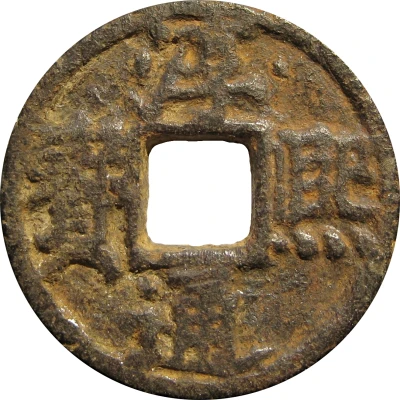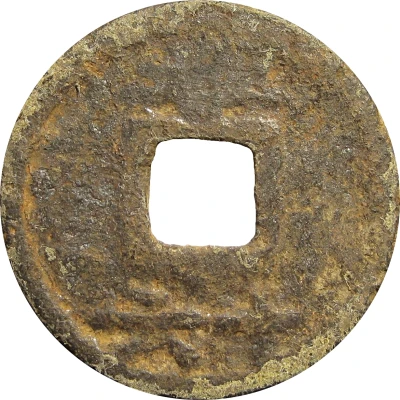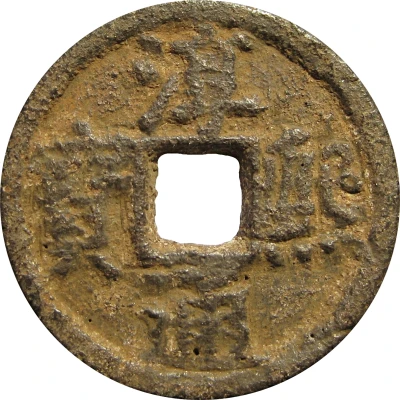


© ollisaarinen (CC BY)
2 Cash - Chunxi Tongbao; Chun; with year; iron
| Iron | 6.83 g | 28 mm |
| Issuer | Empire of China |
|---|---|
| Emperor | Southern Song dynasty › Xiaozong (宋孝宗) (1162-1189) |
| Type | Standard circulation coin |
| Years | 11-16 (1184-1189) |
| Calendar | Chinese - Chunxi era |
| Value | 2 Cash |
| Currency | Cash (621-1912) |
| Composition | Iron |
| Weight | 6.83 g |
| Diameter | 28 mm |
| Thickness | 2.3 mm |
| Shape | Round with a square hole |
| Technique | Cast |
| Orientation | Medal alignment ↑↑ |
| Demonetized | Yes |
| Updated | 2024-10-04 |
| Numista | N#140784 |
|---|---|
| Rarity index | 94% |
Reverse
One Chinese ideogram above and at least two below.
Script: Chinese (traditional, regular script)
Lettering:
春
十六
Translation:
Chun / Shi Liu
Qichun (mint) / Year 16
Edge
Plain
Comment
In 1180, numbers were added to the reverses to indicate the year of issue (which was said to reduce the amount of illegal casting). Presumably, coins without years were cast before the numbers were added.The year 十二下 means Year 12 lower, possibly signifying the second half of year 12.
Interesting fact
One interesting fact about this coin is that it was made of iron, which was a unusual choice of material for coins at that time, as most coins were made of copper, silver or gold. The use of iron in coinage was seen as a way to reduce the cost of production and make the currency more accessible to the general population. This decision was taken by the government of the Empire of China during the reign of Emperor Guang Zhao, who ruled from 1184 to 1189. The iron coinage was minted in large quantities and was used widely in trade and commerce, reflecting the economic growth and development of the empire during that period.

